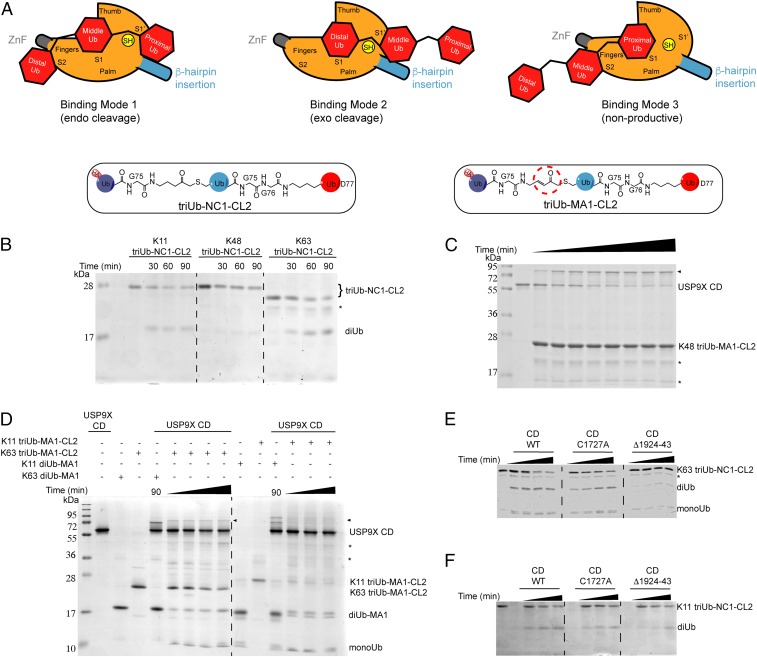Fig. 5.
USP9X CD exhibits linkage-specific endo/exo recognition of polyUb chains. (A) Illustration of the three potential binding modes of a triUb to the S2, S1, and S1′ binding sites of USP9X CD. (B) Cleavage of the K11-, K48-, and K63-linked triUb-NC1-CL2 by WT USP9X CD at three different time points. (C) Incubation of WT USP9X CD with K48 triUb-MA1-CL2 probe at 0-, 5-, 10-, 15-, 30-, 45-, 60-, and 90-min time points. (D) Labeling of WT USP9X CD by K63- and K11-linked triUb-MA1-CL2 probes at 15-, 30-, 60-, and 90-min time points and 30-, 60-, and 90-min time points, respectively. Labeling of WT USP9X CD by K63- and K11-linked diUb-MA1 probes is included for comparison. (E) Comparison of cleavage of K63- and K11- (F) triUb-NC1-CL2 by USP9X WT, ZnF mutant (C1727A) and deletion mutant (Δ1924–43) up to 120 min and 90 min, respectively. The reaction products were analyzed by SDS/PAGE and Coomassie brilliant blue staining. The asterisk denotes contaminating band in the probe preparations and triangle denotes labeling band.

